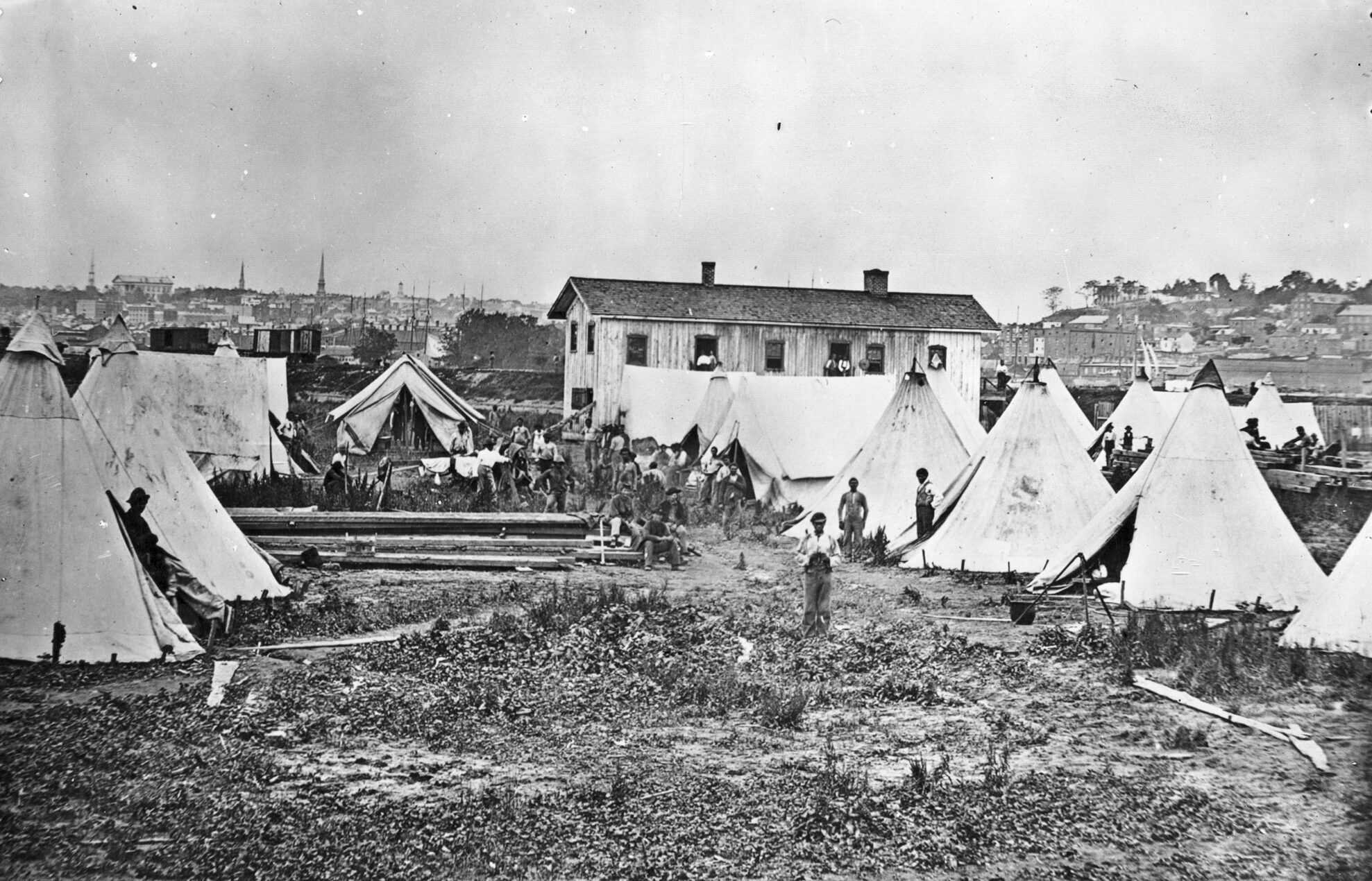Chapter 3
A Divided Nation Fights for Freedom
The election of 1860 was a turning point for the nation. The outcome would determine how the country would move forward regarding slavery. One month after the election of President Lincoln, states began to secede from the Union citing several reasons. Their demands included states' rights to maintain slavery, but also focused on property rights as they cited lack of enforcement of the 1850 Fugitive Slave Act. By April 1861, the Confederacy fired upon Fort Sumter and war was declared upon the United States. President Lincoln did not begin his term with a goal to end slavery. His military goal was to keep the Union together.
African Americans were determined to win their fight for freedom by any means necessary. They self-liberated as they escaped from plantations across the south. On January 1, 1863, the Emancipation Proclamation went into effect declaring that all persons enslaved in the rebelling states were free. It took the bloodiest war in the nation’s history to enforce the proclamation.
Like President Washington during the Revolutionary War, President Lincoln was not initially interested in African Americans serving in the military. However, based on the strategic need for increased military support and influenced by Fredrick Douglass, the president included the recruitment of Black soldiers as a provision of the Emancipation Proclamation. A war to keep the Union together became a fight for freedom and ultimately changed the nation.
The Front Lines of Freedom, 1861–1865
For African Americans, the Civil War was a battle for freedom. Determined to end slavery, tens of thousands of enslaved African Americans used the war to escape their bondage. As the Union Army drove into the Confederacy, enslaved people ran away and entered Union lines, sometimes fleeing hundreds of miles to secure their freedom. With these actions, African Americans made freedom a reality. But unable to find housing, they ended up in temporary camps. Conditions were often crowded and unhealthy, and many people died. Within two years, President Lincoln issued the Emancipation Proclamation and made the abolition of slavery government policy.

Imagine . . . an army of slaves and fugitives, pushing its way irresistibly toward an army of fighting men . . . Their arrival among us . . . was like the oncoming of cities.
Union Gen. John Eaton, 1907
Exodus and Confiscation
An Act to Confiscate Property Used for Insurrectionary Purposes
Stampede Arrival at Fort Monroe, Virginia
One month into the Civil War, three men escaped from slavery and entered Fort Monroe, Virginia. With this act, Shepard Mallory, Frank Baker, and James Townsend declared themselves free and triggered a national debate over emancipation. Gen. Benjamin Butler decided not to return the runaways to their enslavers. Instead, he classified them as enemy property, the contraband of war, and he put them to work in Union camps. The policy and the nickname lasted for the rest of the war.
Tent Cities
Sibley Tent
Tent cities sprang up across the South as enslaved African Americans crossed Union lines and forced the issue of emancipation. Lincoln personally witnessed the growth of these camps as he crossed Washington, D.C., each day. The military provided castoff tents for African Americans to use as shelter. One tent could hold 12 to 20 people. The sheer number of the African Americans arriving put pressure on politicians, generals, and the U.S. government to act.
Camp, Richmond, Virginia, 1865
Map of "Contraband" Camps
U.S. military strategy focused on blockading the Confederacy and cutting it off from supplies. First, the armed forces attacked sites along the Atlantic coast, including the Lowcountry. Second, they began an assault to control the Mississippi River. Both campaigns sent the U.S. Army through large plantation districts. Believing that freedom lay with the Army, enslaved African Americans used great stealth to escape and enter Union lines. Their exodus is reflected in the tent cities that mark this map.
